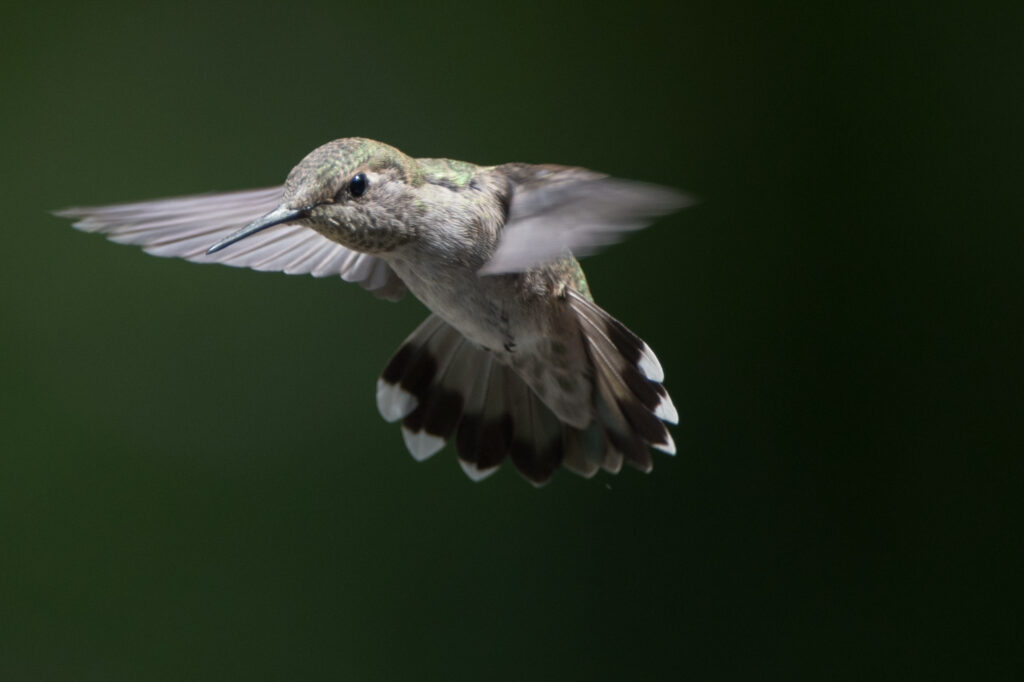Just for reference, the following photo is of an adult Spotted towhee, in this case I believe it’s a female. There is some uncertainty on my part because the female we currently have in the yard is very dark and it’s easy to confuse her with the slightly darker male towhee that is her mate. Females are generally not as dark which is usually most obvious in the bird’s hood.
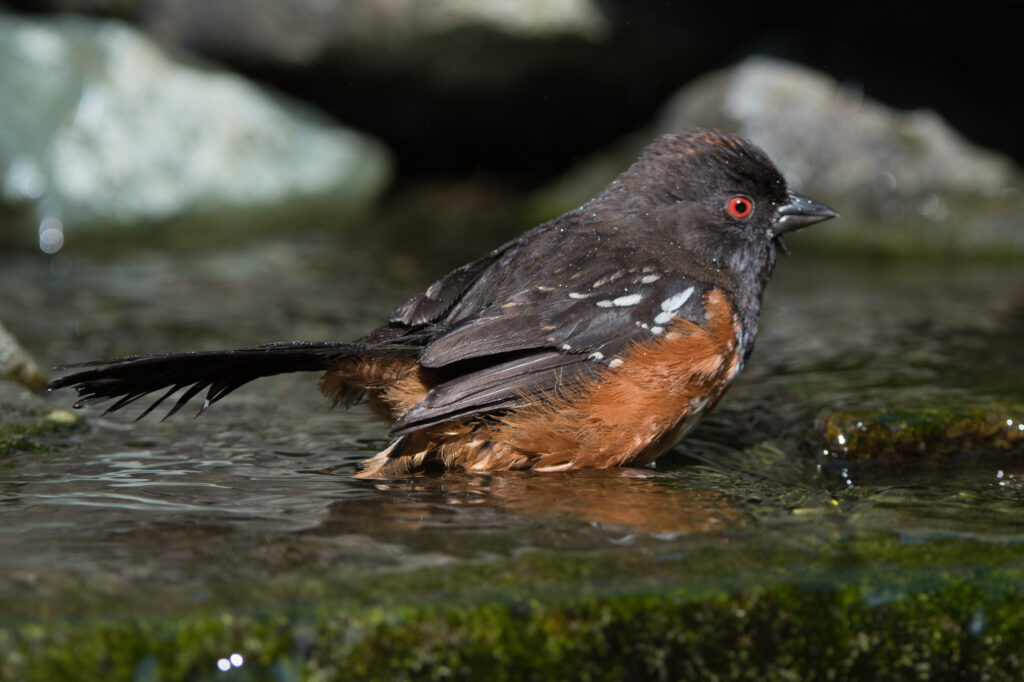
The bird below is a juvenile Spotted towhee that was born this spring. In my mind this is one of the biggest disconnects between adults and juveniles in our area. We almost never see the juveniles before they are independent of the parents. I have seen only one instance this spring of this bird being fed by a parent. I initially thought we had only one juvenile but this past week we had three in the yard, but since recently I’ve also seen two pairs of adults, there’s no way I can determine whether or not the three juveniles were siblings or came from different nests.
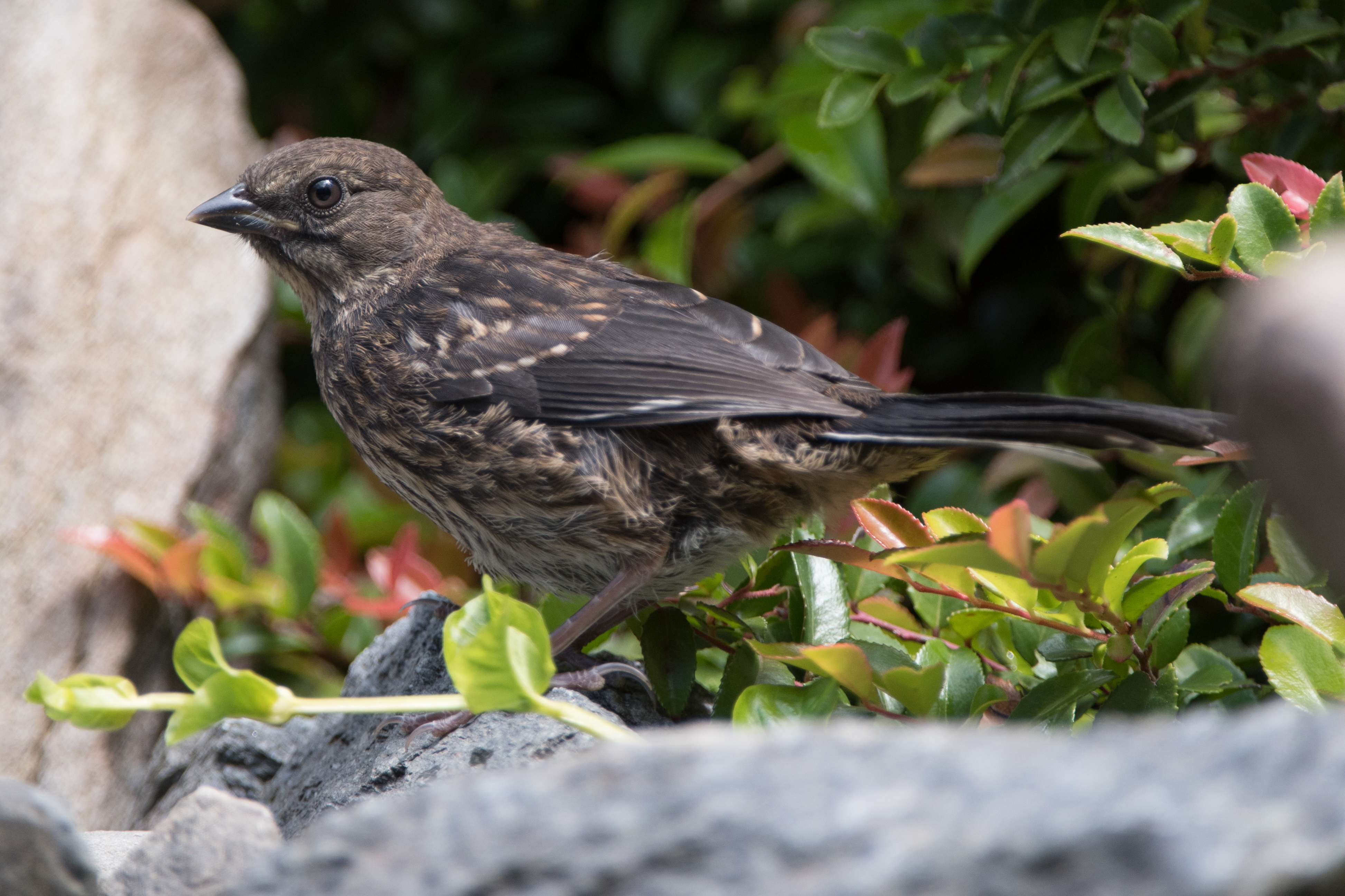
This is the image of a male American goldfinch you usually see.
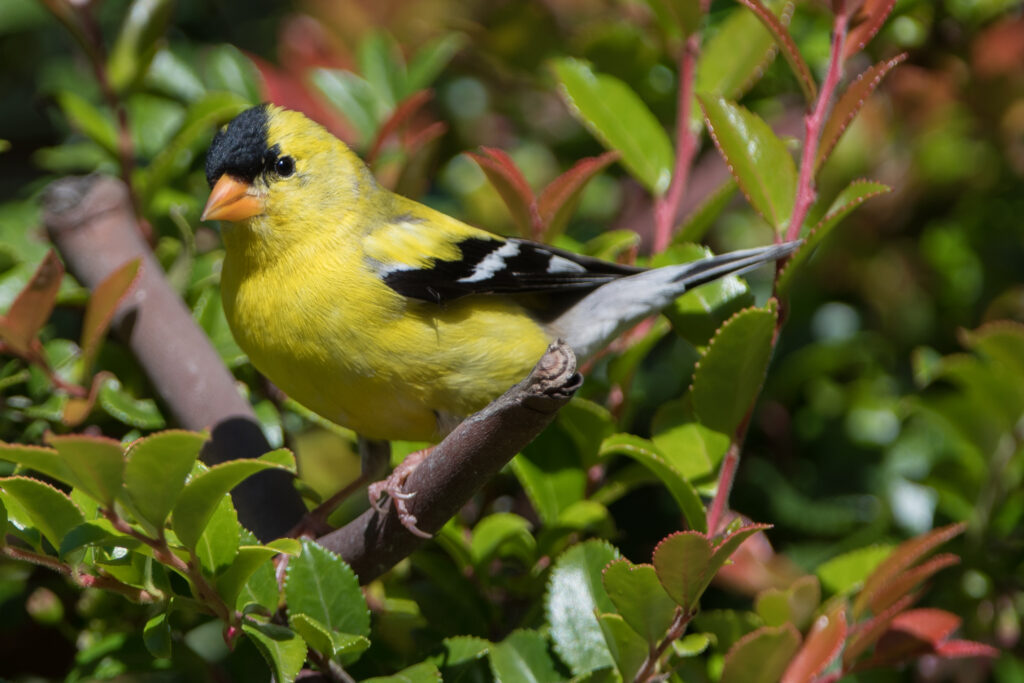
This is an image of a male American goldfinch preening after a bath in our watercourse.
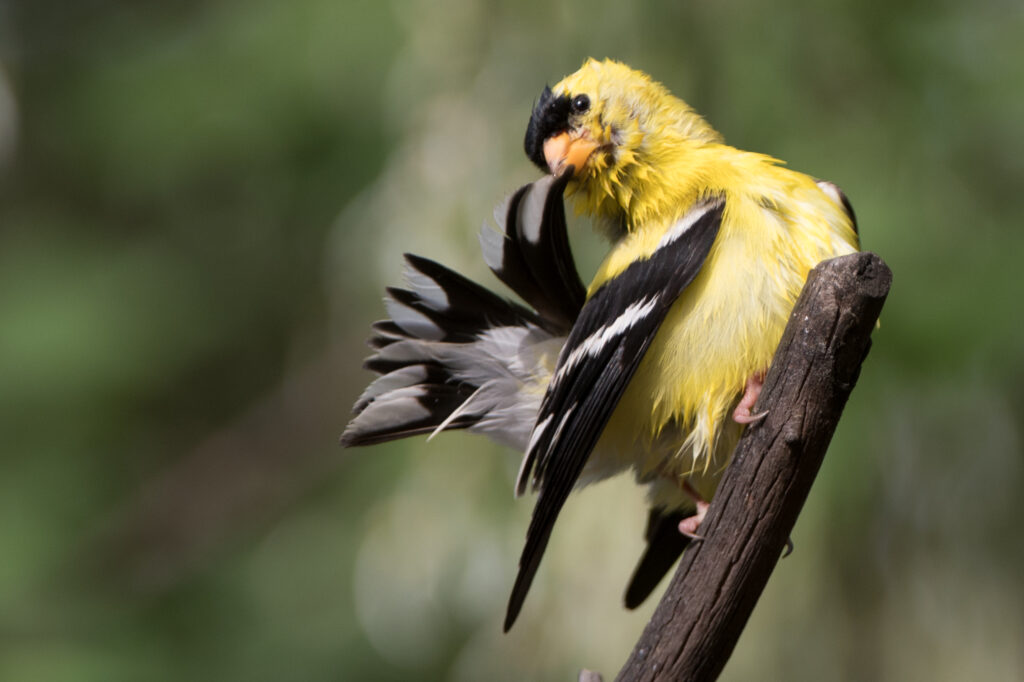
Our suet feeders are always hit hard this time of year by European starlings. Not only do the parents access the suet feeders to take food back to their young, but after the young fledge they bring the young to the yard to utilize the suet feeders. I use only inverted suet feeders to try to eliminate some less desirable birds (such as starlings) and to staunch the flow of suet, but the starlings stab at the suet, dropping some to the ground and then eat the suet lying below. When I used to use non-inverted feeders the starlings could eat their way through two suet cakes per day!

We’re still seeing Black-headed grosbeaks in the yard but aren’t having nearly as many sightings as last year. This is a female at the edge of the watercourse
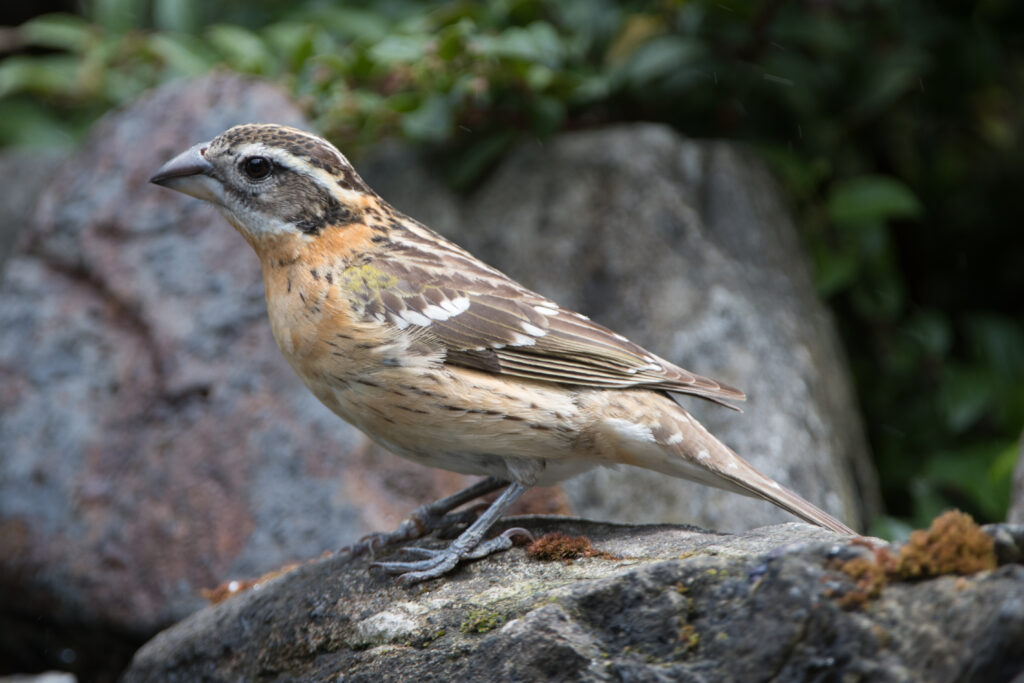
And finally (you may remember from a prior post there is always a “finally”!), here’s a female Anna’s hummingbird hovering above the watercourse. Good practice to hone my skeet shooting skills!
